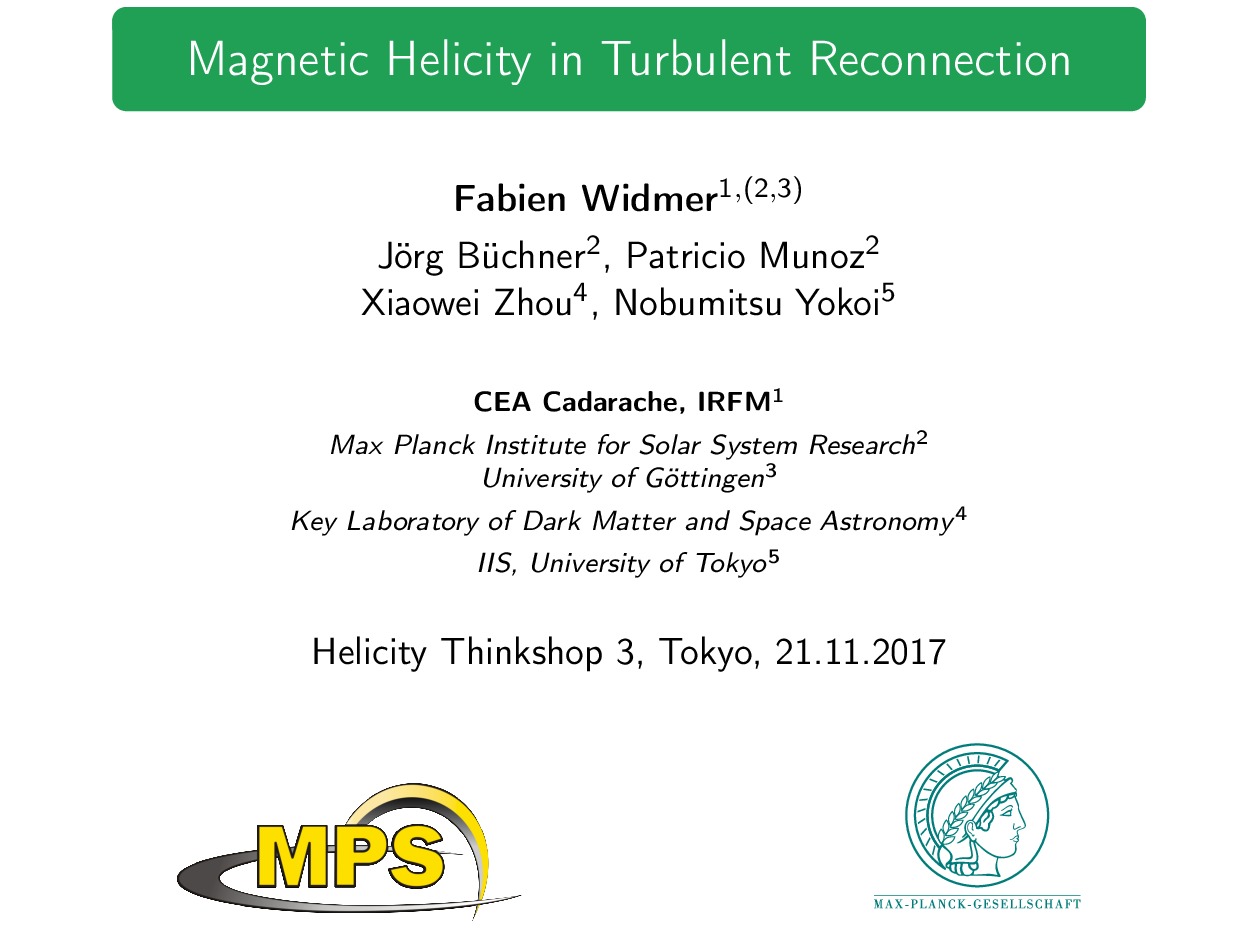Date of upload:
10.01.2018
Abstract:
Collision-less large-Reynolds-number astrophysical plasmas are prone to turbulence. In this context,
it is necessary to consider the impact of turbulence during believed magnetic reconnection events in
solar and stellar flares or in planetary magnetospheres. Magnetic reconnection is a multi-scale process
and turbulence can be the key to bridge the gap between the magnetic energy release at large scales
due to magnetic diffusion at small scales through the Richardson's picture of direct and inverse energy
cascade. Moreover, diffusion of magnetic field by turbulence at small scales might lead to fast
reconnection. Such an interaction between turbulence and fast magnetic reconnection in weakly
dissipative plasmas is considered through the plasmoid instability. The turbulent transport coefficients
are characterize by a turbulent mean-field model and are identified as a turbulent diffusion, crosshelicity
and a residual helicity. These turbulent coefficients are found to lead to fast reconnection for a
single 'X'-point current sheet as well as in the case of multiple 'X'-points, as present in plasmoid
unstable current sheets. For the plasmoid instability, the turbulent coefficients are also found to be
responsible for fast reconnection. In addition, the dynamics between diffusion and sustainment of
magnetic field, related to the turbulent diffusion and residual helicity effects, are shown to be
important for fast magnetic reconnection in presence of strong guide-magnetic field perpendicular to
the reconnection plane. For residual helicity intensities stronger than turbulent diffusive ones, a time
delay in reaching fast reconnection regime is observed. Finally, this turbulence dynamics obtained
during the fast magnetic reconnection phase of the plasmoid instability is used to relate energetic
electrons often found near astrophysical current sheets and magnetic reconnection.
We obtain that fast energetic particles are accelerated by turbulence during fast reconnection processes if residual helicity intensities are weaker than the strength of the diffusion of magnetic field by turbulence.
